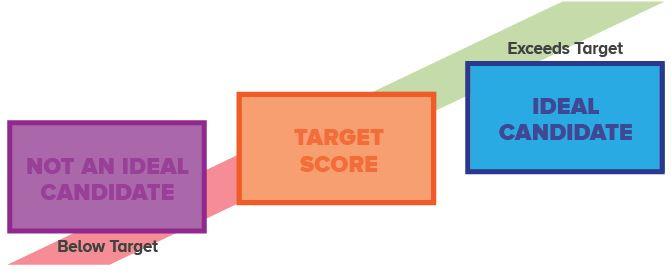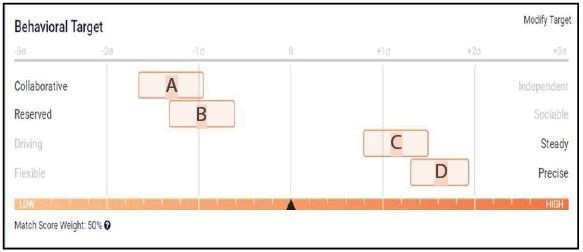Understanding Quantitative Assessments

The use of quantitative assessment tools can help ensure you’re putting the right person in the right seat on the company bus.
Implementing personality and cognitive assessments early on in the hiring process can:
- Reduce turnover rate.
- Reduce resources expended on hiring and training.
- Increase productivity and how teams work together.
By learning more about people prior to hiring through both personality and cognitive assessments, you can use your findings to determine if they match your best-case profile for a position on an existing team.
Predictive Index (PI) Assessment Tool
Predictive Index is a quantitative assessment tool used widely by SBCA members and staff. “We look at the Predictive Index as a tool, just like we buy equipment. It’s really, really, powerful and it has completely changed how we operate,” says Scott Ward, SBCA past president and principal at Southern Components, Inc. in Shreveport, Louisiana.
The behavioral segment of the PI consists of two questions that assesses four factors: dominance, extraversion, patience, and formality. To get the most out of the results, Scott says his team has target profiles they look for in new candidates and explain why those personalities work better for specific positions such as designers, sales, and customer service. For example, Scott says that with the help of his design team, they created a job target for truss designers that best suits his business.
By having potential new hires take the PI, an employer can review the results and determine whether they match the target profile and would be a good fit for the position. The PI also includes a cognitive segment. The 12-minute timed assessment includes 50 questions that cover three categories: verbal, numeric, and abstract. It provides a scaled score and a correct number of responses demonstrate the ability to quickly learn and grasp new information.”
The Predictive Index Behaviors
Dominance (A): The drive to exert one’s influence on people or events.
Extraversion (B): The drive for social interaction with other people.
Patience (C): The drive for consistency and stability.
Formality (D): The drive to conform to rules and structure.

Additional Resources:
- Job Satisfaction: The Right Jobs for the Right People
How your company can save time and money by pretesting potential employees - Predict a Candidate’s Job Performance Before They’re Hired
A focus on cognitive assessments and how they can offer insight into a person’s likelihood of success - How to Hire and Build High-Performing Teams
Learn how to read PI results, create target profiles and improve employee interactions - Getting It Right the First Time
How assessment tests can help you hire a good fit - Webinar: Hiring Smarter for Production
- Webinar: Coaching a Career Culture in Your Plant
Quantitative Assessments:
SBCA Member Discount
SBCA members receive a 10% rebate on their Year 1 subscription to the Predictive Index or CATIL software purchased through Business Results, LLC. The rebate will be provided as a credit on the individual member’s SBCA account and can be applied against any SBCA member purchase (e.g., products/services, education, BCMC, dues, etc.).




